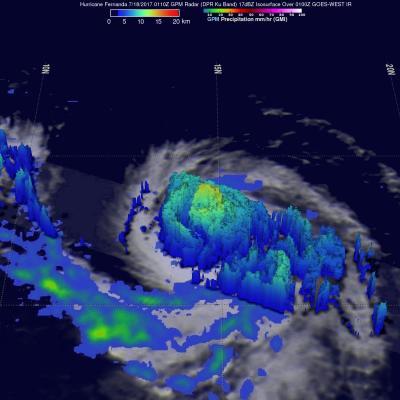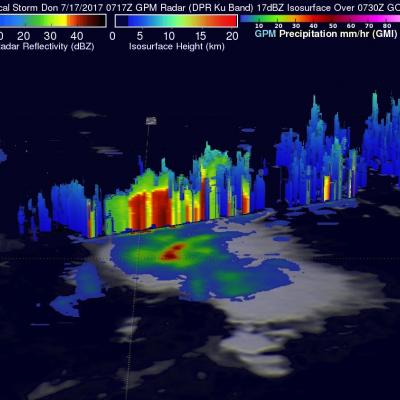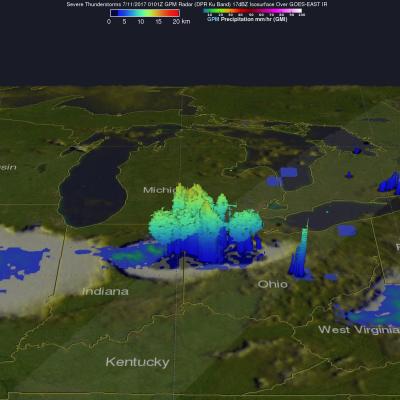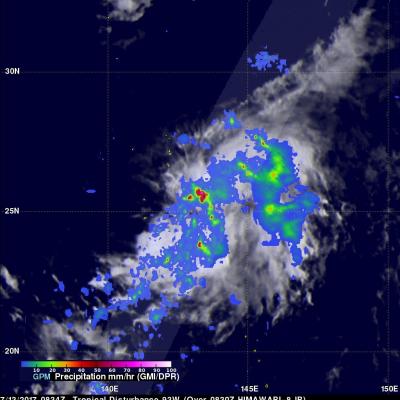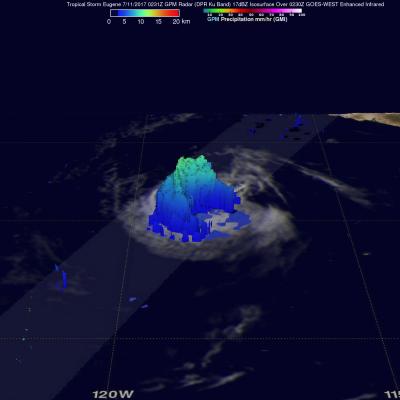GPM Examines Hurricane Fernanda's Eye
The GPM core observatory satellite had an excellent view of hurricane Fernanda on July 18, 2017 at 0110 UTC. Hurricane Fernanda had weakened from it's peak wind speed of 125 kts (143.75 mph) attained on July 15, 2017 but still had maximum sustained wind speeds of about 95 kts (109 mph). This meant that Fernanda was still a powerful category two hurricane on the Saffir-Simpson hurricane wind scale. GPM's Microwave Imager (GMI) and Dual-Frequency Precipitation Radar (DPR) data showed the location of intense rainfall circling around Fernanda's eye. Measurements by GPM's Radar (DPR Ku band) showed


